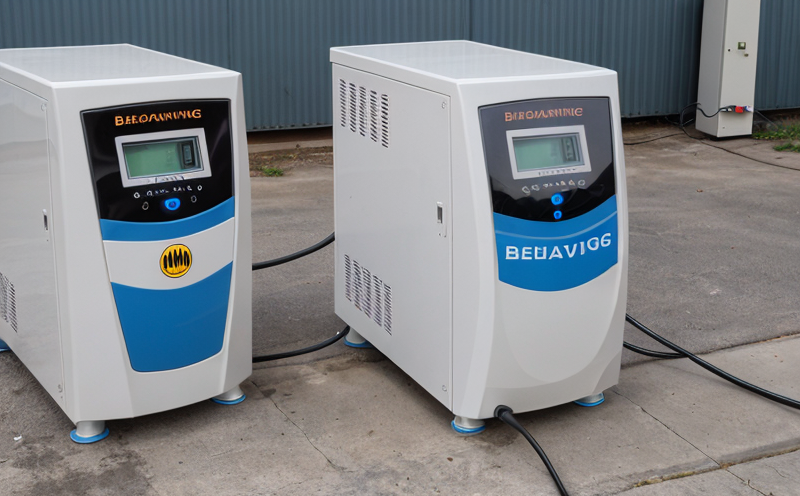IEEE 1625 Charging and Discharging Behavior Testing of Portable Computer Batteries
The IEEE Standard P1625-2014, also known as the "Standard for Determining the Electrical Characteristics and Performance of Lithium-Ion Battery Cells Used in Portable Computers," provides a comprehensive framework for evaluating the charging and discharging behavior of lithium-ion batteries used in portable computing devices. This service ensures that battery cells meet stringent performance criteria, which is crucial for both quality assurance and consumer safety.
Charging and discharging behavior testing is essential to determine the overall health and lifespan of a battery. The IEEE 1625 standard outlines specific test procedures that simulate real-world conditions to assess various aspects such as maximum charge capacity, voltage stability during charging, and energy retention after discharge. This service is particularly critical for manufacturers looking to ensure their products meet regulatory standards and provide consistent performance.
The testing process involves precise control over environmental factors like temperature and humidity, which can significantly affect battery behavior. By adhering strictly to the IEEE 1625 protocol, our laboratory ensures accurate and reliable results that reflect the actual operational conditions of portable computer batteries in various environments.
Our experienced team of engineers uses state-of-the-art equipment calibrated according to international standards such as ISO/IEC 17025. This allows us to conduct tests that are not only compliant with IEEE P1625 but also meet the stringent requirements set by other relevant organizations like ASTM and EN.
Through rigorous testing, we can identify potential issues early on in the development process or during production, thereby facilitating timely corrective actions. This proactive approach helps manufacturers maintain high product quality while reducing costs associated with post-production recalls or warranty claims.
The IEEE 1625 standard also emphasizes safety aspects by specifying maximum allowable voltages and currents to prevent overcharging or overheating of the batteries. Our testing ensures that these limits are strictly adhered to, thus protecting both users and devices from any risks associated with improper battery operation.
By leveraging our expertise in this area, we offer clients a reliable partner for ensuring compliance with industry standards while enhancing their brand reputation through superior product quality.
Scope and Methodology
The scope of IEEE 1625 charging and discharging behavior testing covers the evaluation of lithium-ion battery cells used in portable computing devices. The methodology involves several key steps, including:
- Preparation of the test specimen according to specified dimensions and specifications.
- Calibration of all instrumentation to ensure accurate measurements throughout the entire test duration.
- Controlled charging cycles under defined voltage levels and current limits.
- Ongoing monitoring of critical parameters like temperature, internal resistance, and voltage during each cycle.
- Discharge testing following completion of successful charge cycles to assess energy retention capacity.
The results from these tests are compared against the requirements outlined in IEEE P1625-2014 to determine whether the battery cell meets all necessary performance criteria. Any deviations from expected behavior would indicate areas requiring further investigation or improvement.
This comprehensive approach ensures that every aspect of charging and discharging is thoroughly evaluated, providing a robust foundation for understanding how these batteries will perform in real-world applications.
Benefits
- Enhanced Reliability: By testing according to IEEE P1625-2014, manufacturers can ensure that their products consistently meet industry standards. This reduces the likelihood of failures during use and extends product longevity.
- Improved Safety: The stringent safety protocols specified in this standard help prevent overcharging or overheating incidents, which could otherwise pose hazards to users and devices.
- Compliance Assurance: Adhering to IEEE P1625 ensures that products meet regulatory requirements, thereby facilitating smoother market entry processes and avoiding potential legal issues.
- Increased Consumer Confidence: Reliable and safe batteries built through rigorous testing instill trust among consumers, leading to higher satisfaction rates and stronger brand loyalty.
The combination of these benefits makes IEEE 1625 charging and discharging behavior testing an indispensable tool for any company involved in the production or quality assurance of portable computer batteries. It not only enhances product performance but also contributes significantly towards maintaining a safe and efficient technological ecosystem.





